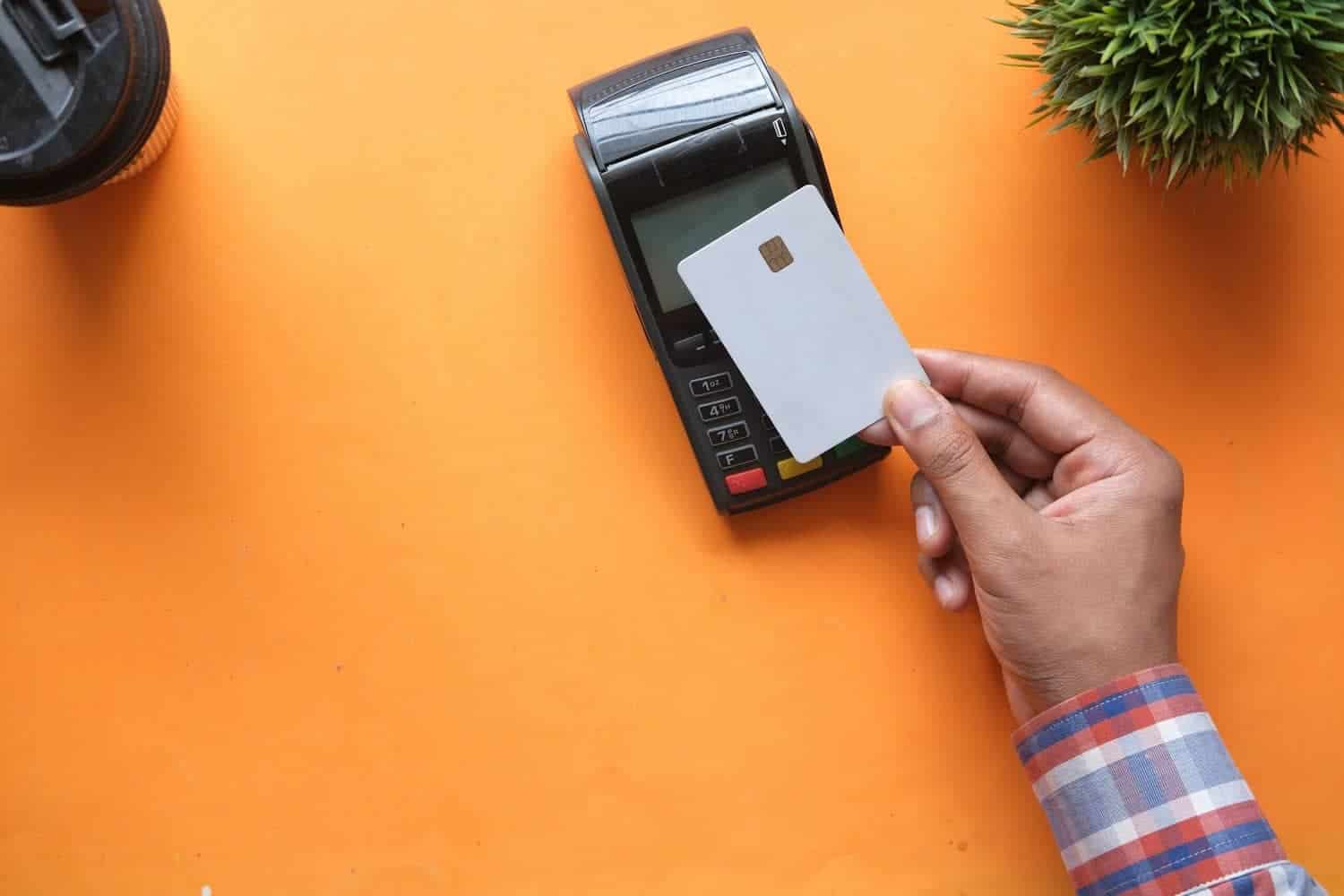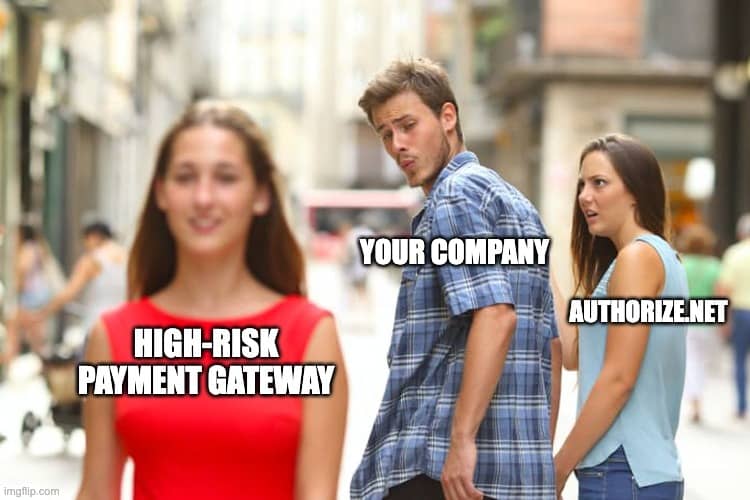Why Are High Risk Merchant Account Prices So High?

You’re not alone if you’ve tried to get merchant services for your business and have been dismayed by the high monthly fees. For so-called “low-risk” merchant accounts, basic credit card processing fees alone can range between three and four percent. And if your business is considered high-risk, these fees can go up dramatically, adding up to a substantial loss in revenue.
Why are high-risk merchant account fees so high? Unfortunately, the outrageously high set-up fees and monthly rates are caused by several factors that may not be within your control. And they have very little to do with how successful your business is. Invariably, it has to do with the type of industry you’re in and whether it’s designated a “high-risk” industry for merchant account providers.
If you own or manage a high-risk business, the good news is that you can combat these higher processing fees by using Zenti. As a leading payment provider for high-risk businesses across the country, Zenti can help you get approved for a full roster of payment processing services. With Zenti, you’ll be able to take all major credit and debit cards, plus a mobile app and e-check payments, all at low monthly rates.
What are high-risk merchant accounts?
High-risk merchant accounts are businesses in industries that traditional banks, lenders, and credit card issuers consider high-risk. Some of the businesses labeled high-risk include:
- Vape and CBD retailers
- Neutraceutical companies
- Adult entertainment websites
- Online dating sites
- Document preparation services
- Property management companies
- Travel agencies
- Fantasy sports clubs
- Multi-level marketing companies
- Collectibles/antiques dealers
- Gun retailers
- Online gambling and gaming sites
- Pay-day lending services
- Health and beauty retailers
What flags an industry as high-risk? Why are merchant account services so expensive for businesses in these high-risk categories? To answer these questions, it’s important to understand exactly how high-risk merchant accounts are structured.
Merchant accounts: Set-up and pricing
Here’s how the initial pricing structure works for a new high-risk merchant account:
- Set-up fee: When you open a merchant account, you’ll be asked to pay an initial set-up fee, a one-time fee upfront. Depending on the merchant account service provider, it can range from a few hundred to several thousand dollars.
- Registration fee: Once your account is set up, you’ll need to pay a 500 USD registration fee to VISA and Mastercard. Depending on your merchant services provider, this could be a one-time or annual fee if you’re required to renew your registration yearly. This special registration fee is only required for businesses in high-risk industries, so if you’re asked to pay it, make sure your industry belongs on the credit card company’s high-risk list before you pay.
After you pay these initial fees, it’s time to read up on payment processing costs.
Pricing structures for high-risk merchant accounts
Merchant account providers follow several basic pricing structures. Some providers only offer one or two, while others offer multiple pricing models for their merchant clients. Here’s an idea of the types of fee schedules you might see:
Tiered
In a tiered (or bundled) structure, the merchant account provider categorizes interchange fees according to their transactional risk level. This model uses three tiers:
- Qualified rate: These are low-risk transactions, such as card-present transactions where the customer physically presents a standard credit card for payment.
- mid-qualified rate: This applies to higher-risk transactions, such as card-not-present transactions.
- Non-qualified rate: These charge the highest fees and apply to the riskiest transactions, such as e-commerce sales.
Flat rate
In a flat-rate structure, you’ll pay a flat monthly fee and a fixed percentage per transaction.
Interchange plus
Merchants assigned Interchange plus fees are responsible for the standard interchange fee (explained below) plus a percentage of each transaction.
Subscription
A subscription format resembles interchange plus. The only difference is that a subscription fee (due monthly) replaces the standard interchange fee, and there’s still a fixed fee per transaction.
Which structure is right for you?
You can benefit greatly from choosing the right merchant account payment structure for your business as a high-risk merchant. Generally, interchange plus works well for many types of businesses. Likewise, a flat rate is ideal for businesses with lower sales volumes, while a subscription plan works better for businesses with high transaction volumes.
Experts often caution against tiered merchant account pricing. Tiered plans can be the most expensive due to several hidden fees. Also, tiered pricing gives merchant account service providers the power to decide your business’s risk level. Their judgment may not be accurate and may not be in your business’s best interests.
Whichever fee structure you choose with a high-risk merchant account, paying higher fees is difficult to avoid without an expert merchant account partner.
Zenti specializes in helping high-risk merchants navigate through the complicated maze of fees and pricing structures.
You’ll never pay high credit card processing fees. and You’ll never be blindsided by charges you didn’t see coming. But you’ll always receive expert account advice from payments experts and the payment processing service your business needs. Charges you were unaware of while still getting all the payment processing services your business needs for success.
What is an interchange fee?
Payment processing fees don’t just involve a flat fee; they involve multiple fees imposed with every payment transaction, depending on the card company and payment processor. As a merchant, there’s one fee you can’t escape: the interchange fee.
Every time you process a debit or credit card payment, the card-issuing bank charges the merchant an interchange fee. This so-called “swipe fee” is intended to cover processing and authorization costs and potential fraud risks that the card issuer might face. Interchange rates will vary for each credit card and banking network, and these rates are updated twice a year in April and October.
Essentially, the interchange fee is unavoidable. Most merchant account providers add a markup to the interchange fee to cover the costs of their services. Additionally, you might find a host of other charges added on. While some fees are negligible, they don’t take long to add up. No matter how well your business performs, these fees can increase substantially if you’re in a high-risk industry.
Why are merchant account services so expensive?
Merchant account service providers have one thing in common: The more high-risk they deem the business, the more they charge for services. And in the eyes of financial institutions, various factors play a role. But the two greatest challenges for businesses in these industries are chargebacks and card-not-present (CNP) transactions.
What do chargebacks and CNP transactions have to do with payment processing approval? Plenty, according to banks and credit card companies.
Why are chargebacks a risk?
Chargebacks occur when a customer requests a credit or debit card purchase refund. In a typical chargeback, the customer disputes the charge, contacts the bank or credit card company, and gets a full refund for the transaction amount. Chargebacks often are a result of:
- The customer never received the item.
- The customer isn’t satisfied with the product or service.
- A duplicate charge was made erroneously.
- The product arrived damaged.
- The charge was fraudulently made by someone else.
For business owners, chargebacks are never welcome because every chargeback results in an additional fee the merchant must pay. For some businesses, these fees can add up quickly. Ecommerce retailers are especially prone to high chargeback rates because customers make purchases without physically seeing or touching an item. For most shoppers, nothing replaces the physical experience of seeing and handling a product.
Industries known for higher levels of scamming or fraud can also suffer from high chargeback rates. One prime example is the adult entertainment industry, where a customer may dispute a charge because it was accidentally discovered by someone else, and the customer doesn’t want to admit they made it. According to NASDAQ, so-called “friendly fraud” like this accounted for more than 32 billion USD in chargeback losses in 2021, and industry experts predict that friendly fraud could represent as much as 61 percent of chargebacks by 2023.
One way to combat high chargeback rates is using a merchant account provider that offers the latest next-gen technologies, security protocols, and payment monitoring capabilities to protect your account from fraud. Zenti secures all payment transaction information and credit card data, helping you mitigate escalating chargeback fees. Your merchant account offers credit card payment processing compliant with Payment Card Industry (PCI) Standards. Plus, monthly invoicing tools help you manage your transactions without missing a thing.
How do CNP transactions impact risk?
According to banks and credit card issuers, CNP transactions are also challenging. A CNP transaction occurs when a customer doesn’t present a physical payment card for payment. Typically, CNP transactions include online payments, phone orders, and any other type of remotely initiated transaction. CNP transactions pose an even greater risk because the merchant doesn’t see the card, can’t manually input the card number, swipe the card, or otherwise visually look for identifying factors such as the card security code (CVV) or the customer’s signature.
Why do merchants pay more for high-risk accounts? The threat potential. Business owners in lower-risk industries don’t pay these higher fees because less risk is incurred in their transactions.
What are some differences between a high-risk and a low-risk account? Typically, a low-risk merchant account:
- Has a transaction volume of less than 20,000 USD/month
- Doesn’t handle international currencies
- Has low chargeback ratios
- Doesn’t rely as much on CNP transactions
- Has average per-sale transactions of less than 500 USD
- Are in low-risk industries
Why do these risk factors matter so much? For banks and credit card issuers, it’s ultimately about underwriting.
What is underwriting?
An underwriter is a bank or financial institution that provides financial backing for a credit or debit card. Payment cards are all backed by major banks or financial institutions, where the proverbial buck stops. If a fraudulent payment is processed, or if something happens and the payment gets declined, the merchant isn’t the only one to lose money — the financial institution loses it, too. In fact, on every bad transaction, there’s a whole domino chain of entities that lose money, starting with the merchant, through to the credit card company, and ending with the bank or financial firm underwriting the card.
No one wants to lose money on a bad, faulty, or fraudulent transaction. And because some industries typically have a higher level of CNP payments, chargebacks, and fraudulent payments, they’re automatically designated high-risk. Due to this designation, they must pay higher processing fees to mitigate those risks. This way, an underwriter and anyone else in the payment processing chain can at least recover some of their losses. However, merchants get the short end of the stick: they don’t recoup any losses they may incur.
If your business is in a high-risk industry, it doesn’t matter how successful you are; you have to pay higher fees for payment processing. And if your business experiences chargebacks or fraudulent payments, you’ll lose even more money.
Partner with Zenti
If you’re tired of losing revenue because of high transaction fees, Zenti can help. With Zenti, you can get approved for VISA, Mastercard, American Express, and Discover payments, as well as a mobile app, ACH payments, and e-checks, all for an affordable rate.
You get the best data security measures to ensure your payment, transaction, and customer data remains guarded, with the added benefit of tools to help you streamline invoicing and accounts.
If you’re ready to boost revenues, improve customer retention, and lower your merchant account fees, contact Zenti. See how payment industry experts can help you get the high-risk merchant services your business needs.
Read Next

Find out whether Authorize.Net works for high risk merchants, what restrictions you might face and how to get approved.

Get expert advice on selling CBD products on Shopify, including compliance tips and setting up secure payment options.

Find out why Square may deactivate merchant accounts and steps to resolve issues and maintain uninterrupted payment services.
Need a High-Risk Merchant Account?
Disruption-free payment processing at the best price for your situation, guaranteed.
Get Free Guidance Now!